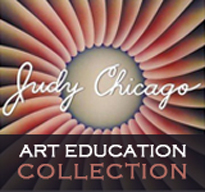Forum Replies Created
-
AuthorPosts
-
Andrea T.
ParticipantIn order for the curriculum to be more culturally responsive, especially on topics surrounding issues of gender, race, age, sexuality and disability issues, we will need to see full support from administration. It is slowly changing, but as with most change, there are those who are resistant. With the proper education, training, and support, issues can be address from a united front. Discussion and safe spaces are essential, and discussing difficult topics with children at a young age prepares them for more in depth curriculum and experiences later in life.
Andrea T.
ParticipantI believe that present day art curriculum is much further along than it used to be regarding issues of gender, race, age, sexuality and disability issues. However, there is still a long way to go before it is adequate enough to do true justice to these issues. As exposure to artists online from all walks of life become easier to access, it becomes easier to find artists who are making important work about gender, race, age, sexuality, and disability. One no longer has to solely rely on textbooks and museums to designate artists as significant. However, the more formal institutions of art still need to actively curate works of art that address these issues, so that they can become a part of the larger cultural dialogue.
Andrea T.
ParticipantThe curriculum I offer varies greatly from my experiences as a young child. I attended a parochial school, and our instructor led us through simple holiday-based crafts, or drawings where we followed along very closely to step-by-step directions. The goal was for everyone’s project to look exactly the same.
Now, as a teacher and administrator in a museum classroom and educational setting, my curriculum is focused on looking at art in person, slowly, and utilizing discussion and story-telling. Art making is very process based, and students are encouraged to use materials and explore the techniques they have in mind to get their ideas across. We are inspired by works of art, but not trying to perfectly replicate.Andrea T.
ParticipantThe challenges are finding work that is representational of a diverse group of artists in art history older than thirty years. The other challenge is finding work that addresses the diverse audience, but is still relevant to young students or those without a socially conscious educational background.
However, finding art that challenges students’ preconceptions is a wonderful opportunity to start dialogue and get them thinking about ideas they haven’t been introduced to before. It also gives students who are not typically reflected in traditional Western art history to see themselves reflected by adult, working artistsAndrea T.
ParticipantYes. There are many art history as well as contemporary examples of art helping to transform existing oppressive structures. In the classroom, using these examples as a jumping-off-point for open dialogue, and inspiration for art-making help encourage students to make their own art in the classroom which challenges and transforms oppressive structures. When students are reassured that the classroom is a safe space to express themselves, and be heard out, they are more likely to create open, honest artwork in response to prompts encouraging this type of expression.
Andrea T.
ParticipantBefore prompting my students with questions, we first discuss how to have an open dialogue, that our classroom is a safe place of them to express themselves, and that we all are coming from different life experiences which influence our thoughts, values, and opinions.
What is the change you would like to see in the world?
When discussing social change, we can ask, “What can I do?”
What do you need to protect yourself from? You community?
What other viewpoints might people have about this idea? Why?
What is stopping you from achieving your goals? -
AuthorPosts
